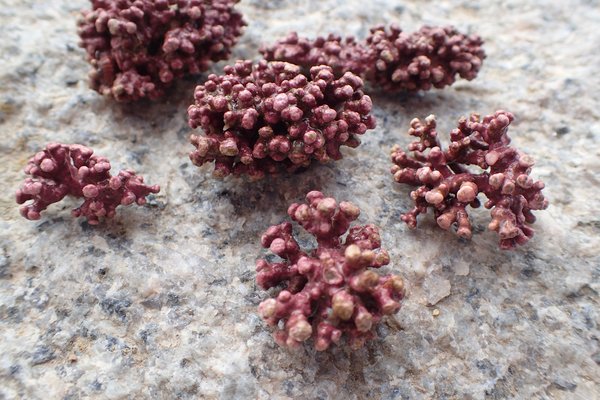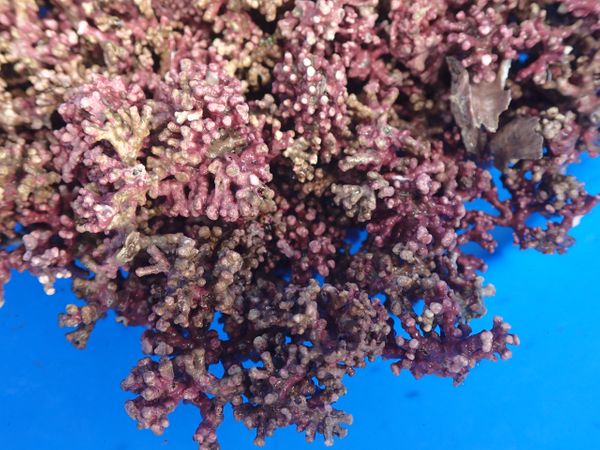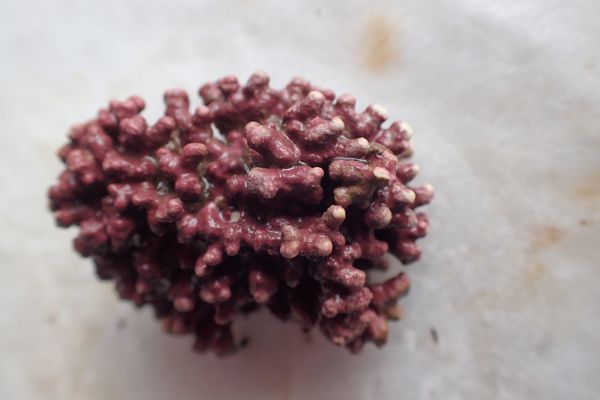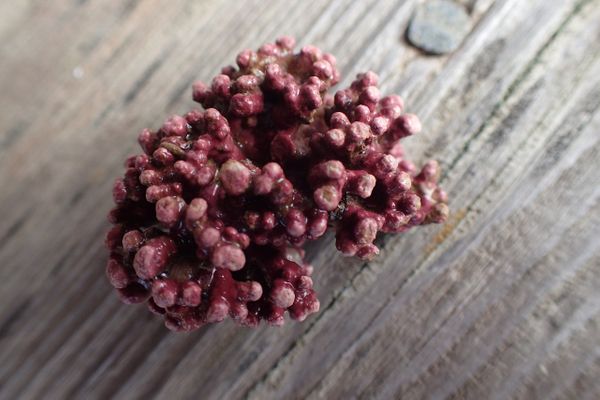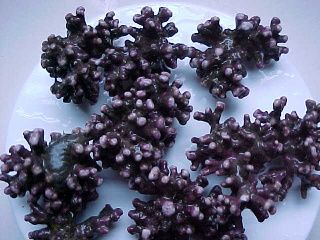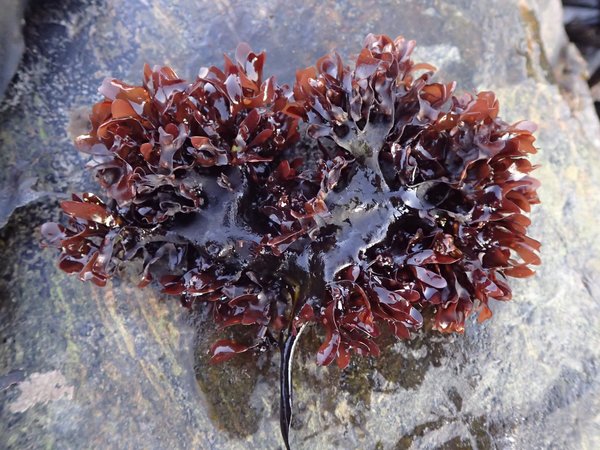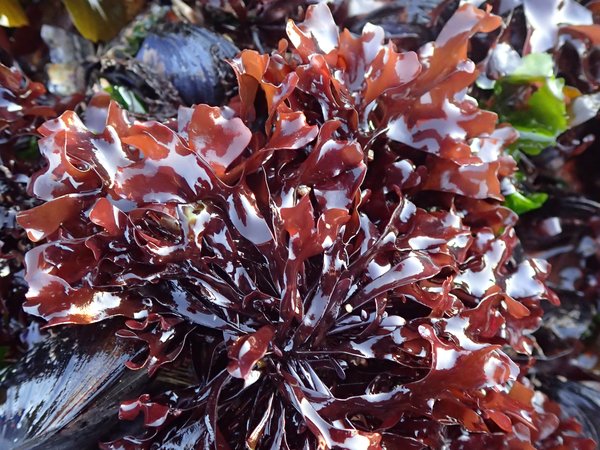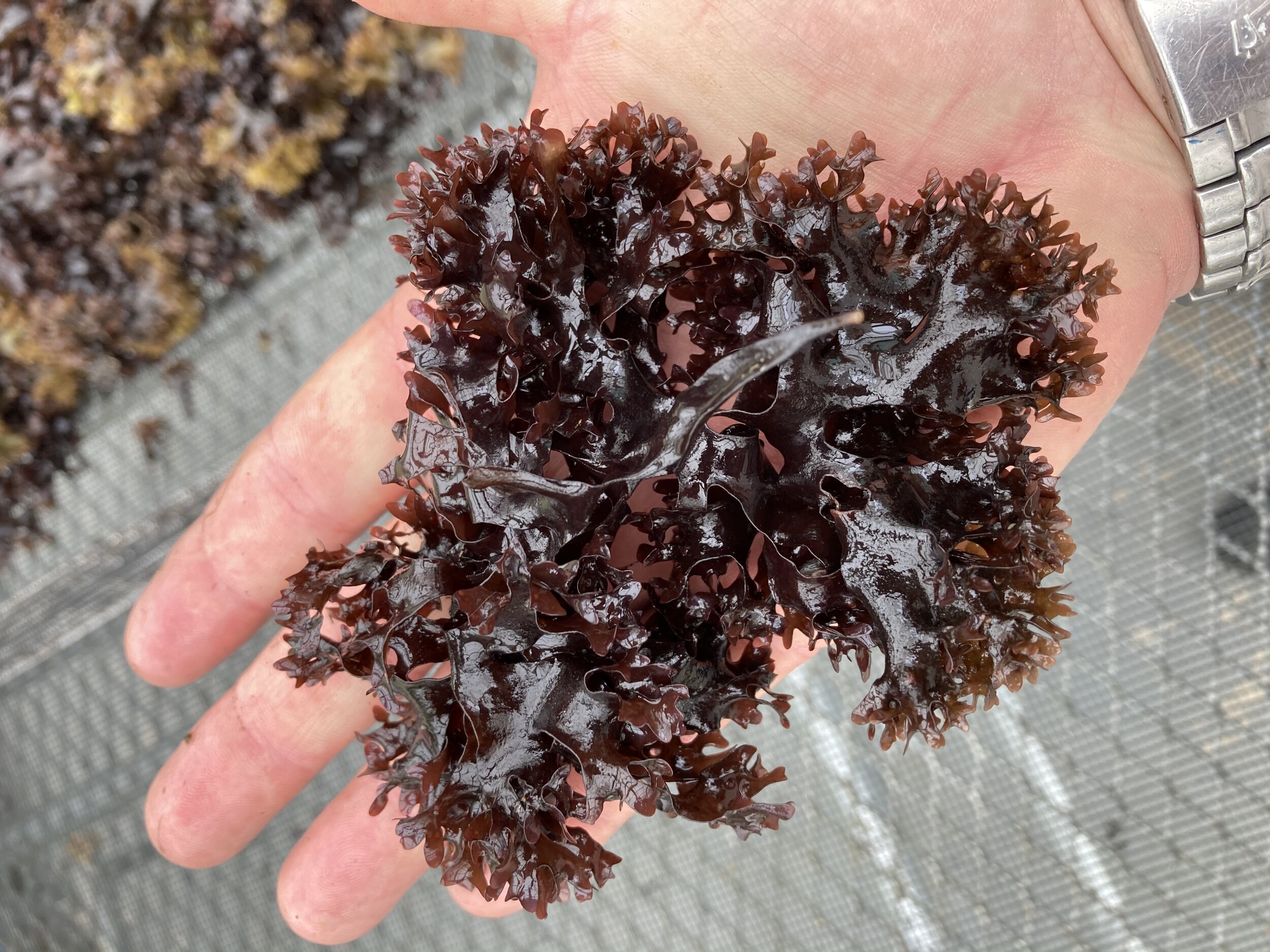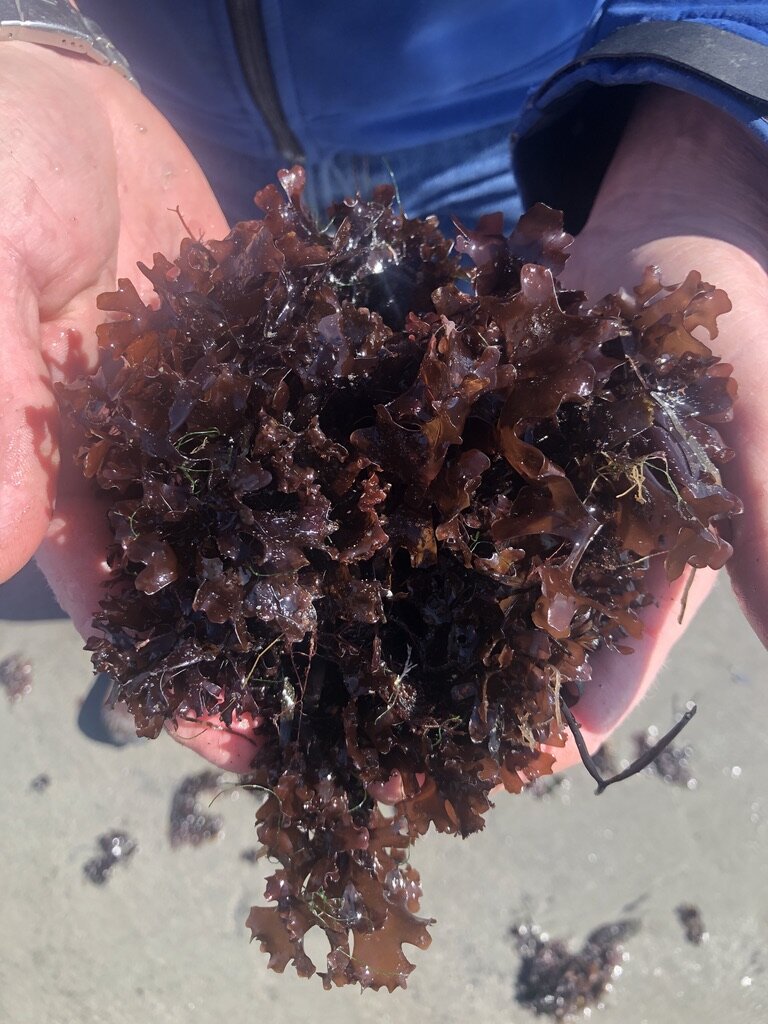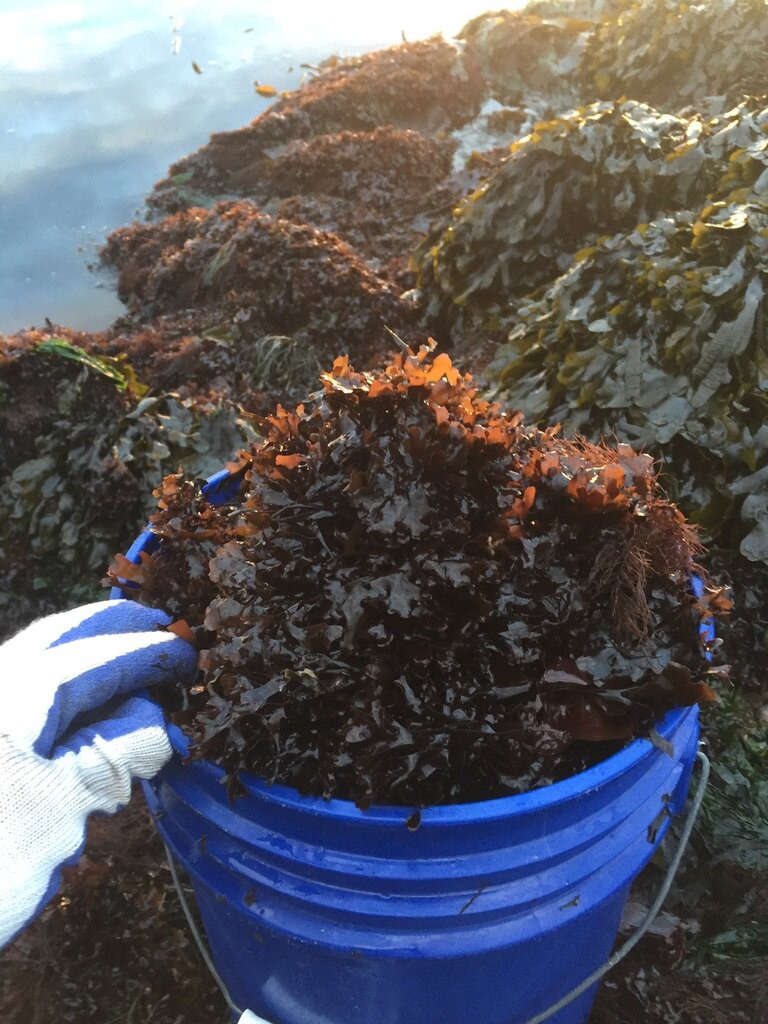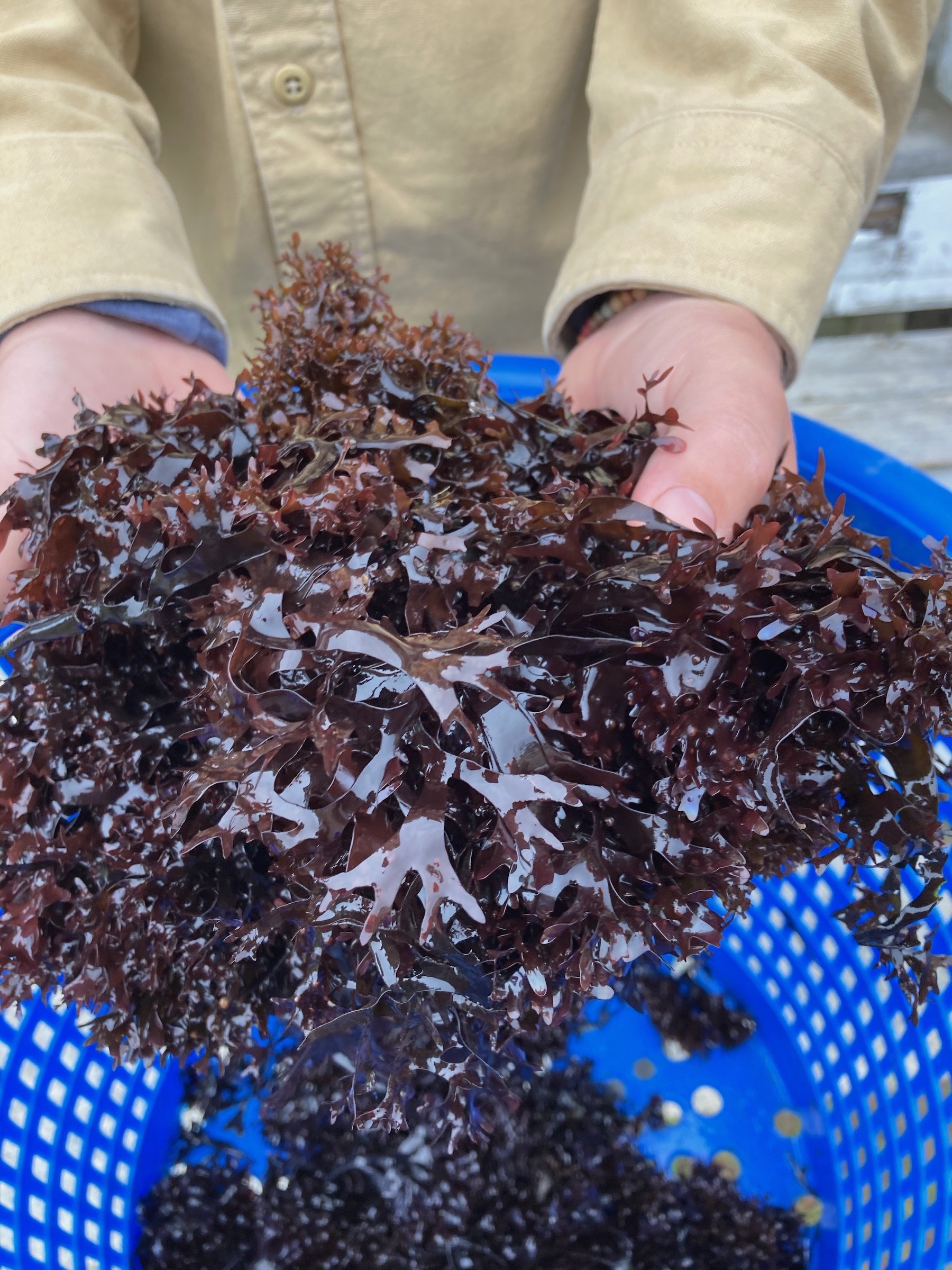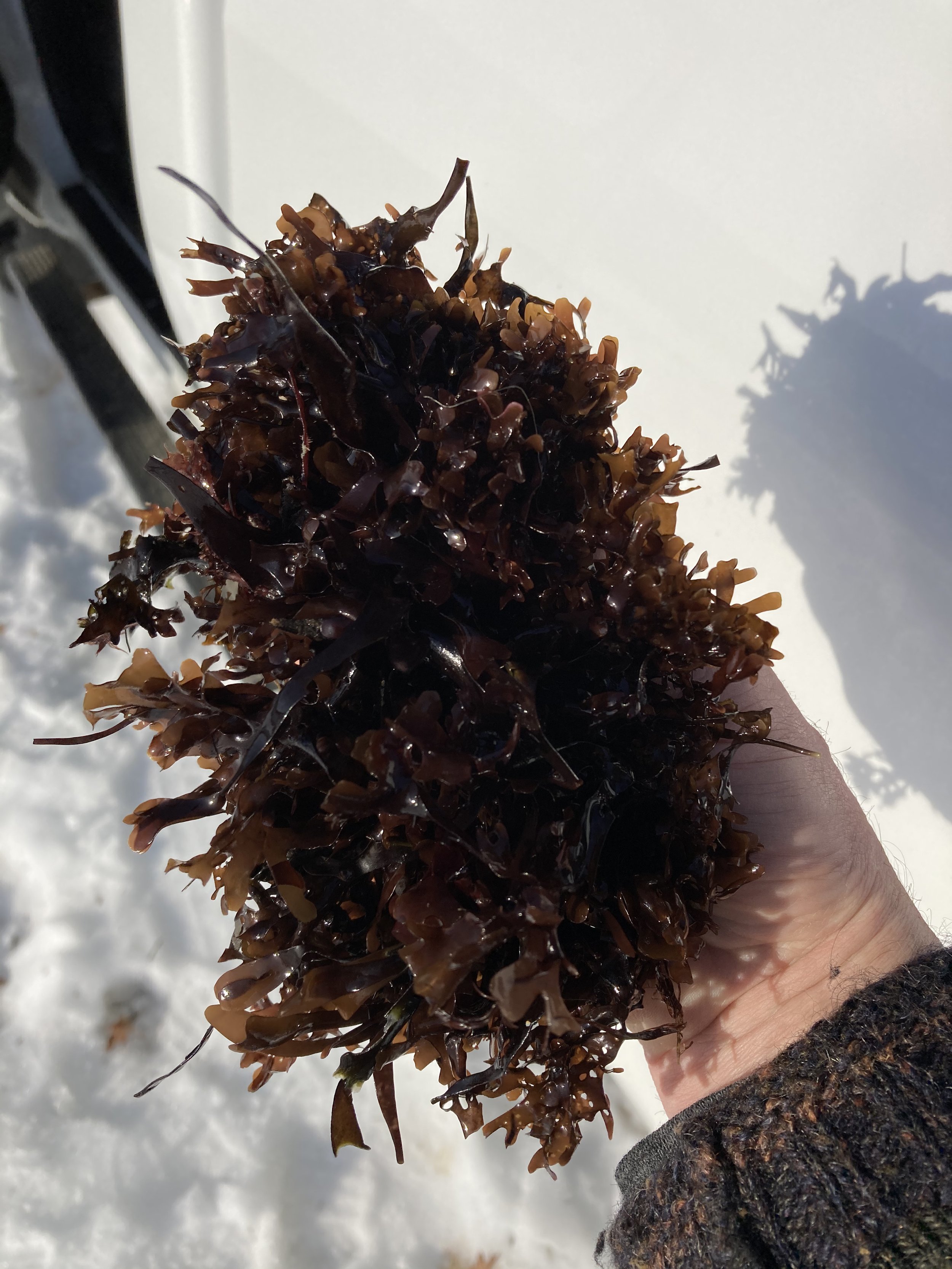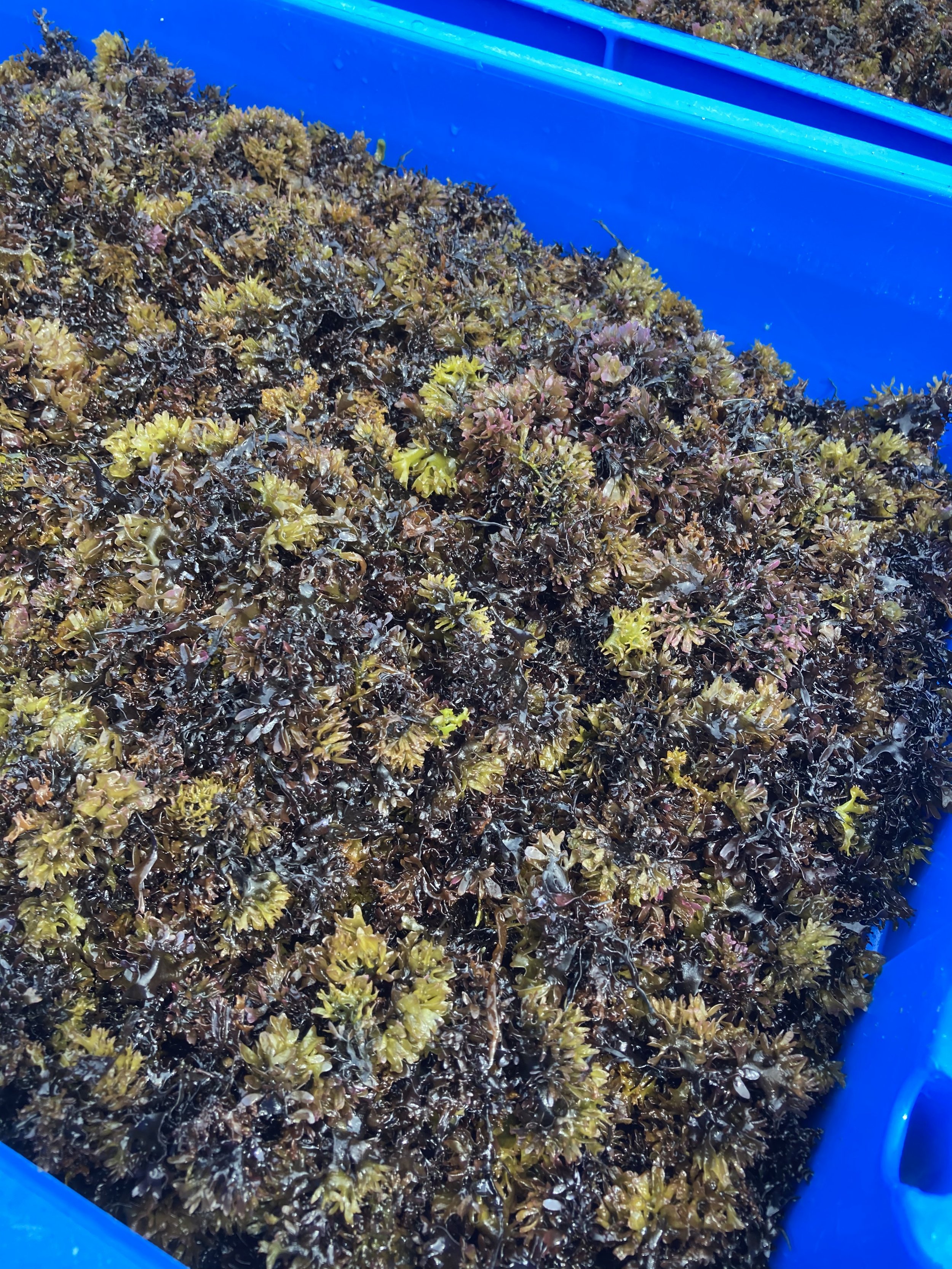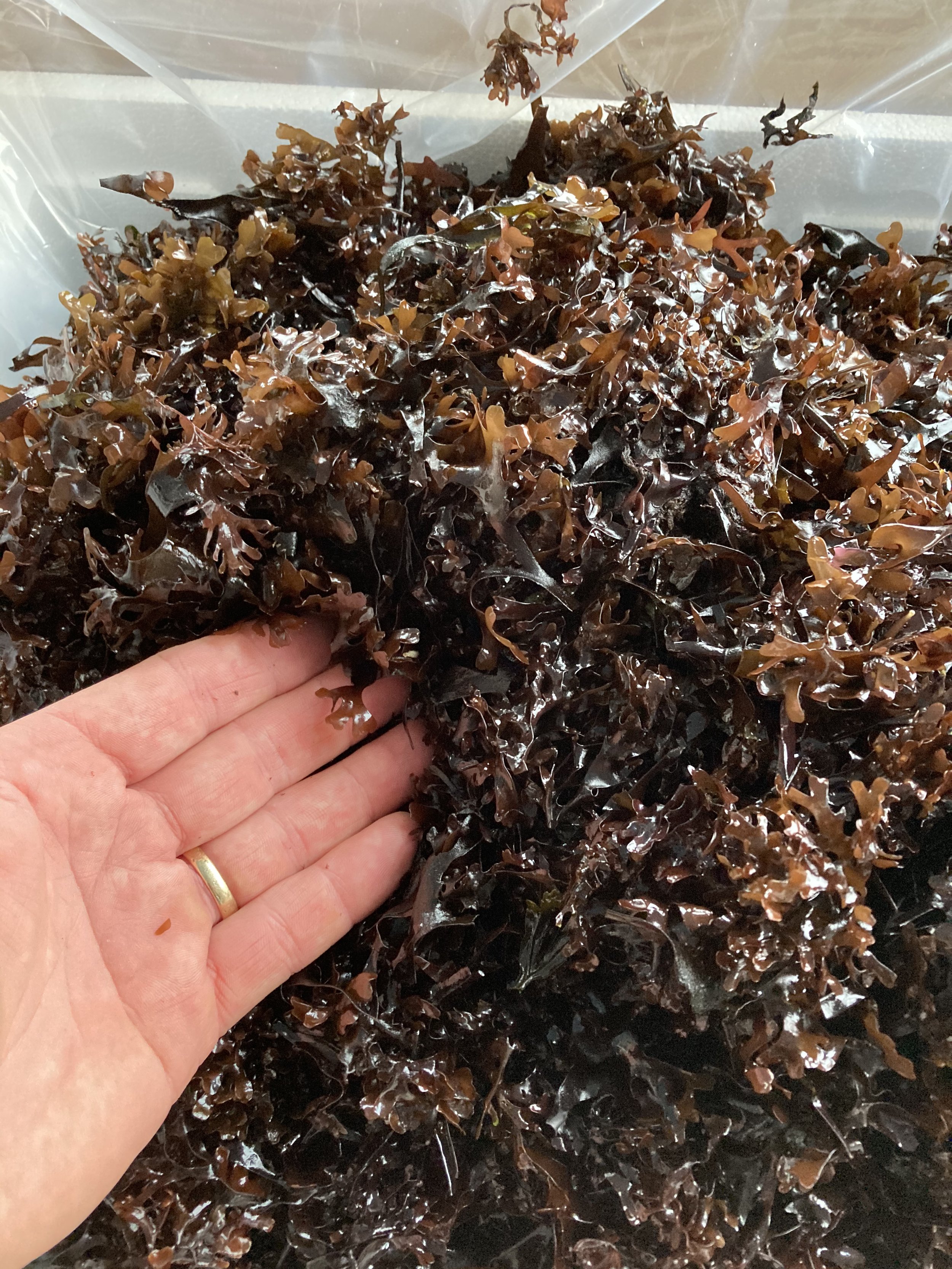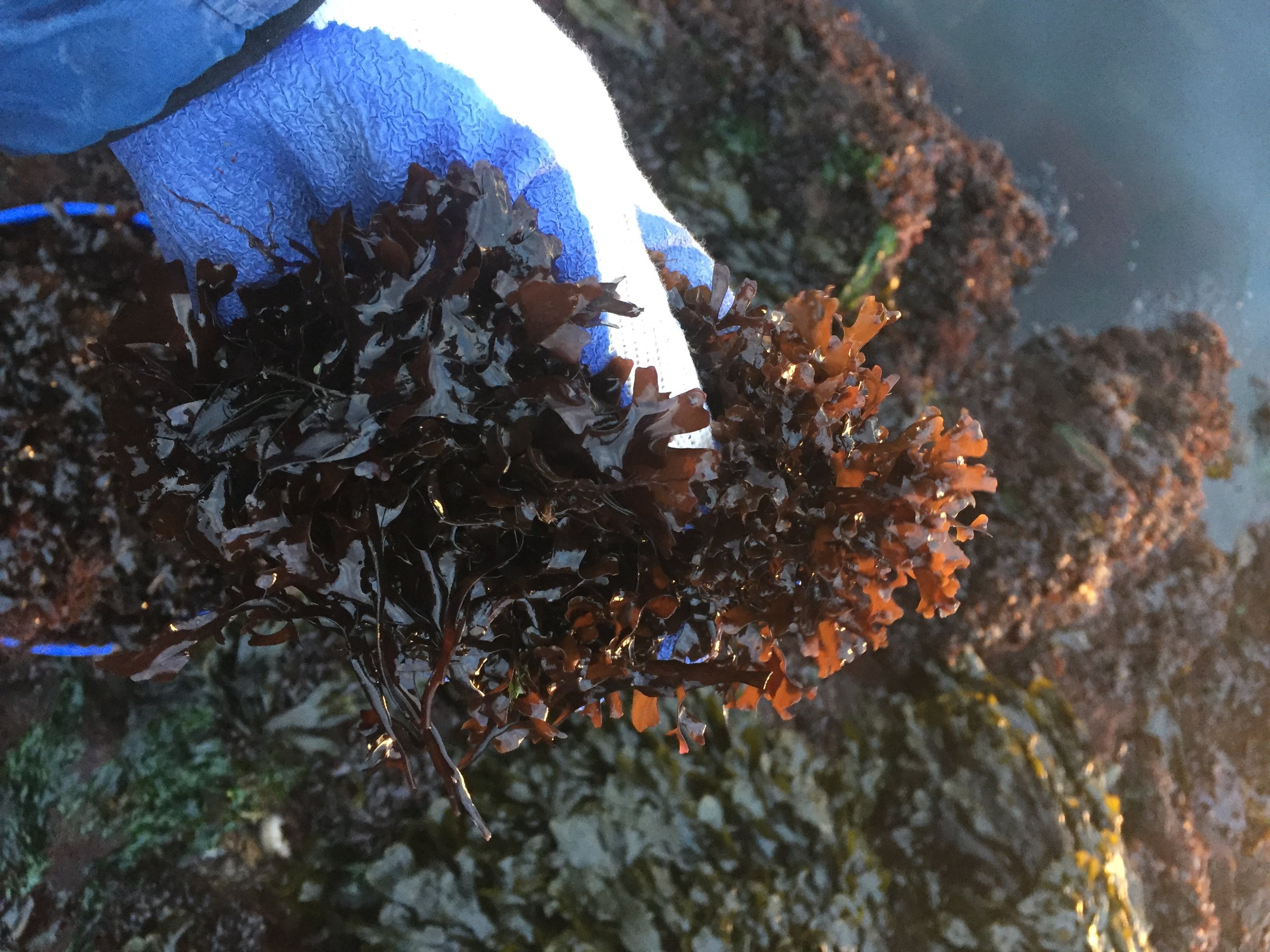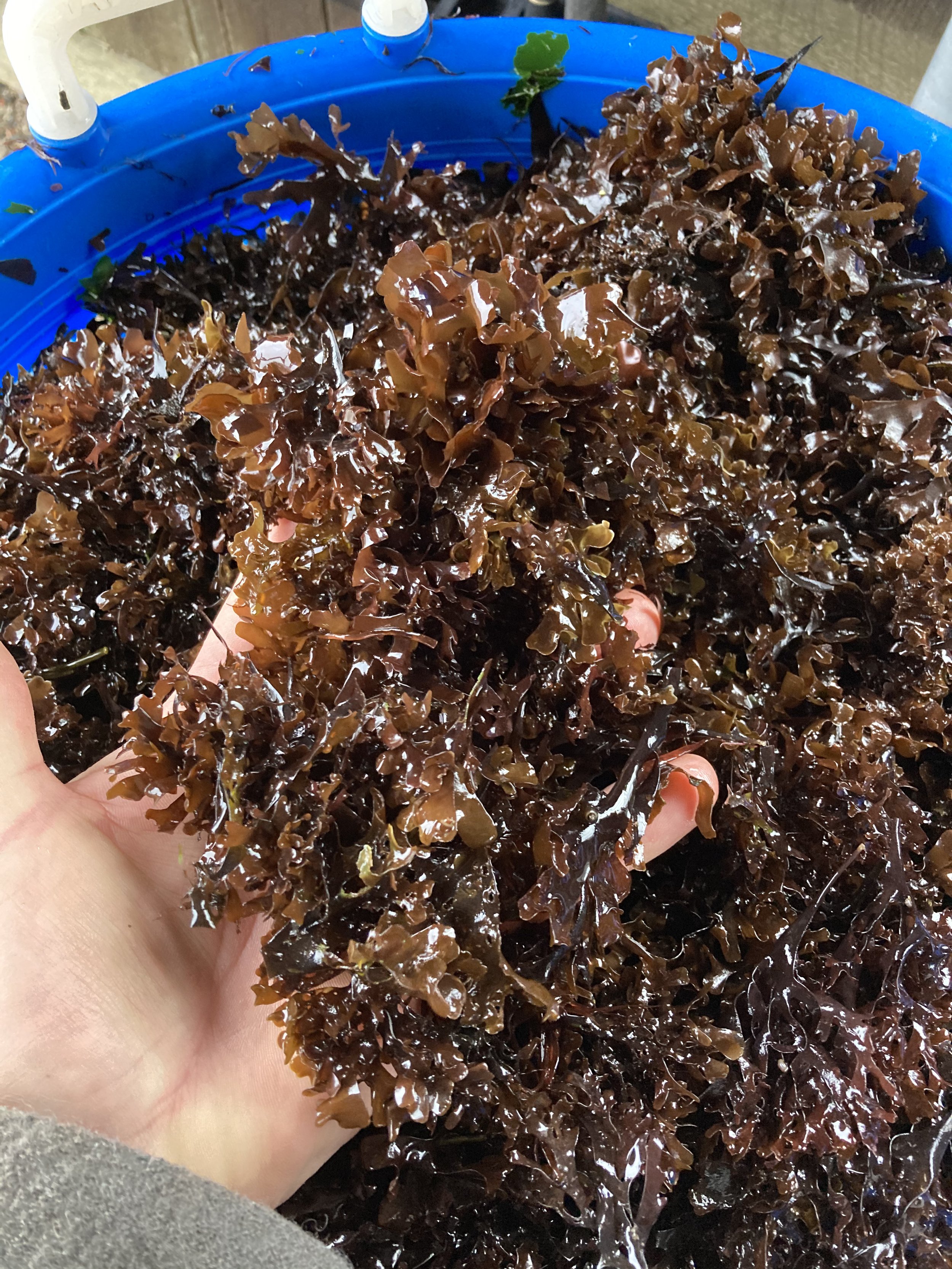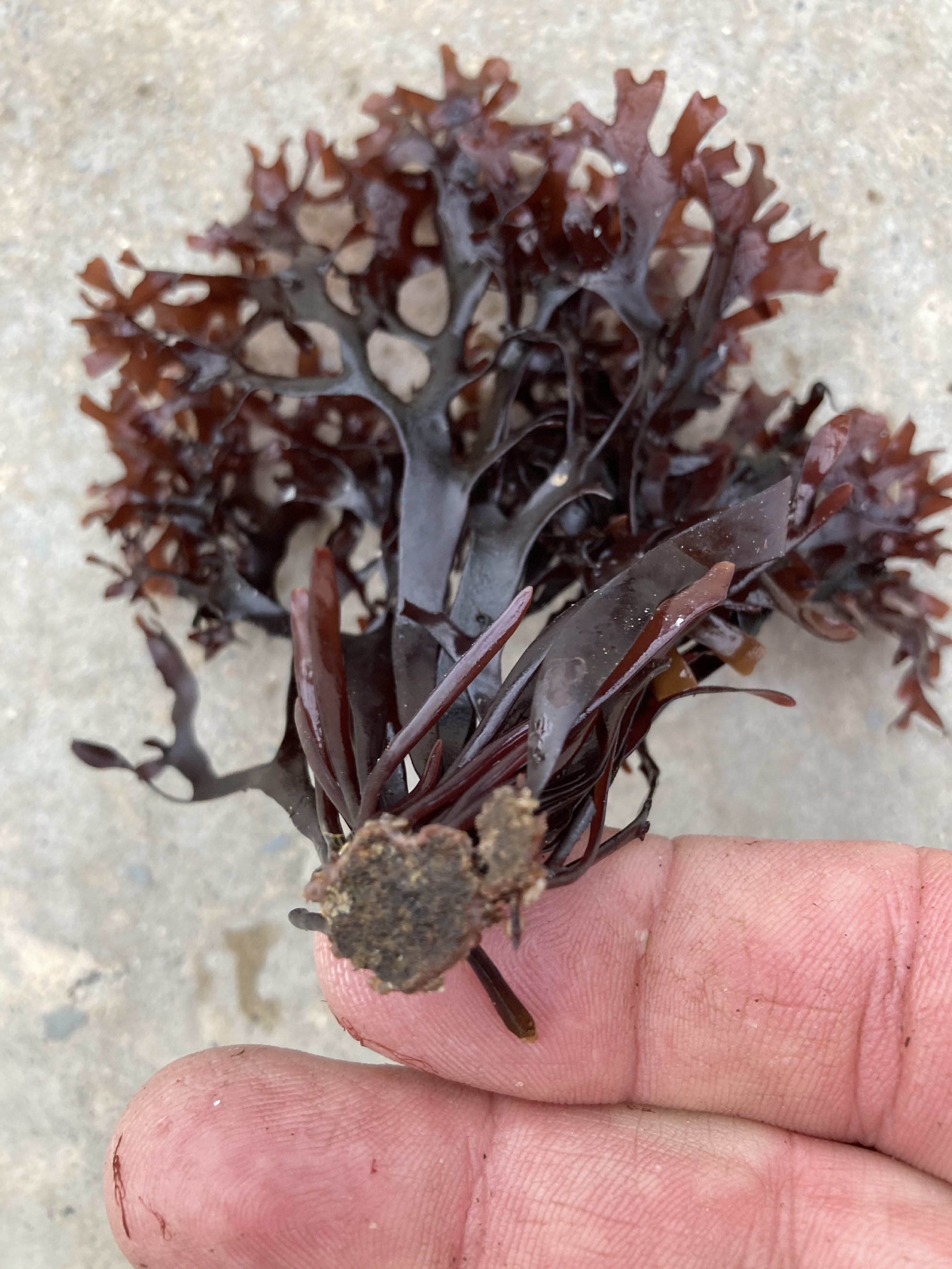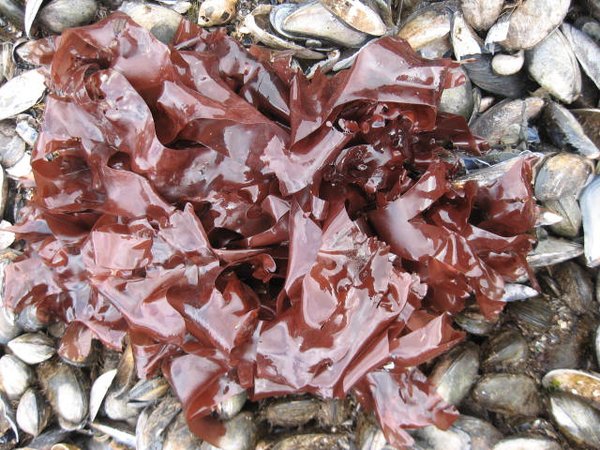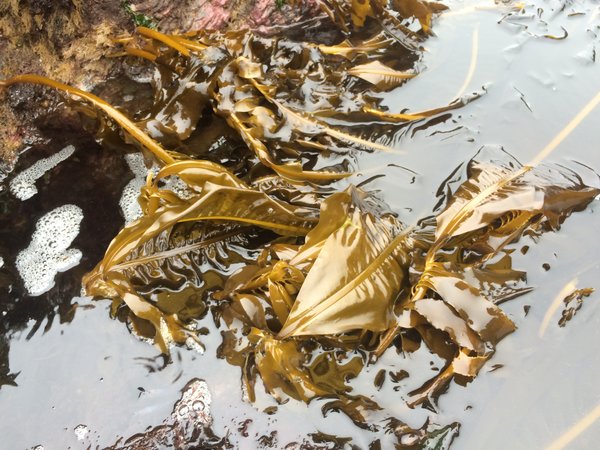Tidepool Tim says, “Worm weed gets its name from the Maine bait-worm industry - it's collected as a packing material in which tens of thousands of sandworms (Nereis) and bloodworms (Glycera) are shipped to bait dealers up and down the Atlantic seaboard. Wormweed harvesters use mesh sacs and hand collect fistfulls of the weed while working the beds among the Spartina marsh grass up towards the high tide line. A good harvester can get 50 bags of wormweed each day and earn a few hundred dollars for their efforts.
At the bait shop, 100 worms are placed in a rectangular cardboard box /flat and several handfuls of wormweed are added to each box before they are air freighted to points south. One interesting fact about this sub-species of Ascophyllum is that it does NOT have a holdfast or air bladders.
This weed is free-floating at times, but mostly it forms dense mats up under the Spartina grass using the roots and stems of this plant to keep it in place. If storm-winds or high tides dislodge it from its shelter, it is able to drift into larger free clumps nearby. Unlike typical Asco, wormweed does not have air bladders and so it does not float when the tide comes in. Overall it's a very interesting strategy that this seaweed has adapted. It's easy to see how it may have evolved to exploit its higher tide location by living in symbiosis with the marsh grass. It may even help trap sediments and bring extra nourishment to the Spartina grass - who knows?”







